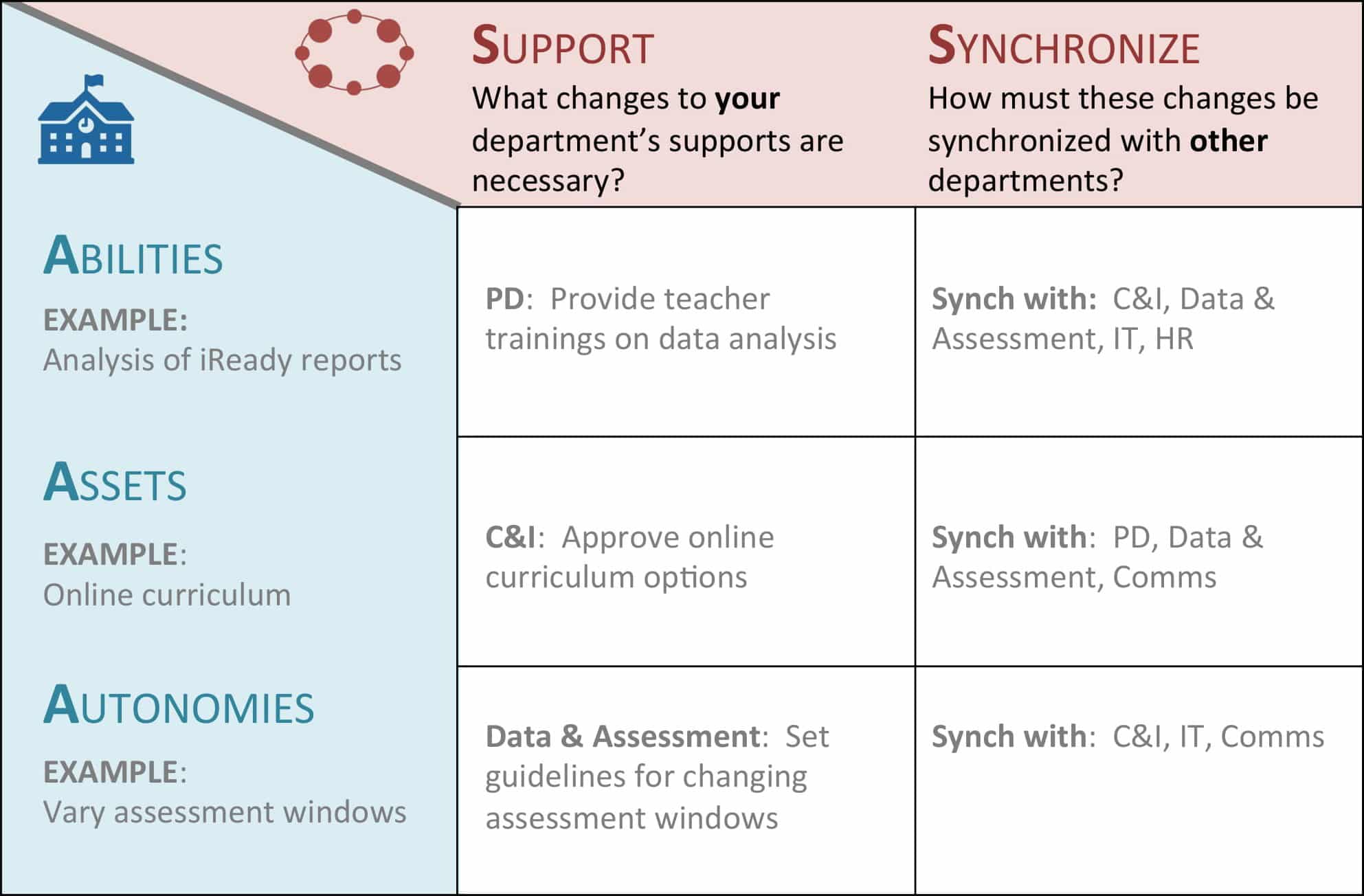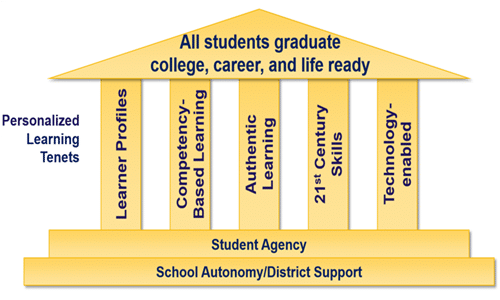Building a District Innovation Ecosystem Accelerates School Transformation
CompetencyWorks Blog
 The Henry County Schools, a large suburban district just south of Atlanta, has spent six years transforming their district of 50 schools and 43,000 students toward personalized learning. In a session at the recent Aurora Institute Symposium, Henry County personnel and partners discussed reorganizing district functions to create an “innovation ecosystem” to facilitate the transformation.
The Henry County Schools, a large suburban district just south of Atlanta, has spent six years transforming their district of 50 schools and 43,000 students toward personalized learning. In a session at the recent Aurora Institute Symposium, Henry County personnel and partners discussed reorganizing district functions to create an “innovation ecosystem” to facilitate the transformation.
The presenters were Karen Perry, the district’s Director of Personalized Learning; Aaryn Schmuhl, VP of Program Design and Innovation at the Georgia Leadership Institute for School Improvement; and Jeffrey Tsang, Founding Partner of Building Blocks Education. All three have been deeply involved in the district’s “2020 Vision for Personalized Learning” redesign process and shared many of the district’s strategies and insights from this work.
Building a District Culture of Innovation
District design often evolves organically, but transforming a district requires attending deliberately to the culture of innovation. Everyone needs to hear from district leadership and the school board, “We’re about to about to embark on innovative work that’s intentionally different, and it’s going to be challenging.”
Several conditions are required for this message to take hold. First, the district and schools need to pour resources and efforts into building trust, because engaging in change requires trust. Second, it’s essential to establish and communicate a “north star” and have clear discussions about what’s needed to move toward it. For Henry County, the north star has been building student agency. Many of the district’s innovation strategies have changed over time, but the north star has stayed the same.
Third, decision makers across the district need to be meaningfully included. An inclusive process may slow down change in the short run, but it enables deeper change in the long run. Over a period of years, Henry County often gathered key decision-makers from all departments around a table at the district office and framed discussions as “Here’s a problem we need to solve; how can we do that?” rather than “We know what changes are needed; here’s what you need to do.”
This level of inclusion is essential because adopting an entirely new school model—unlike simply adopting a new textbook—involves every district department. Changes required from different departments could include:
- Information Technology – Adopting new learning management systems.
- Communications – Conveying the rationale for reforms to a range of key stakeholders.
- Student Services – Exploring implications for students with special needs.
- Facilities – Creating different types of learning spaces.
- Human Resources – Recruiting new hires with relevant skills, dispositions, and training to build the pipeline.
A Framework for Building the Ecosystem
Henry County developed a valuable framework for building the innovation ecosystem based on three sets of school needs and two sets of district actions. The three school needs are:
- Abilities – What skills, knowledge, and culture will schools need help in developing?
- Assets – What resources, materials, or infrastructure will schools need?
- Autonomies – What autonomies and requirements will schools need?
The two district actions are:
- Support – What changes to your department’s supports are necessary?
- Synchronize – How must these changes be synchronized with other departments?
The figure below shows how schools and district departments can use this framework, with each cell addressing different needs within the innovation ecosystem. For example, in the bottom row, schools might need autonomy to vary the timing of assessments. This would require the data and assessment department to set guidelines for varied timing. It would also require the curriculum and instruction, information technology, and communications departments to synchronize their actions.

Transforming a Large District
With 50 schools, Henry County had to decide what to require of all schools versus where to permit flexibility. They developed a “Vision for Personalized Learning” (see figure below) with a foundation of student agency and pillars representing their five personalized learning tenets. They also created an extensive rubric that can assess each schools’ progress toward that vision. For example, the rubric section on “Authentic Learning” has six criteria: rigor and real world application, relevance, authentic audience, feedback, reflection and revision, and agency. Each criterion can be rated at four levels, and the rubric clearly describes what would be observed at each level. In addition to the clarity the rubric provides, it models the types of rubrics teachers should provide to students.

Within this district-wide vision, schools were encouraged to adapt personalized learning to the needs and resources of their own settings. For example, all schools had to use formative assessment tools, but teachers and schools could decide which ones to use. The district created a document setting out these choices. The session presenters said that this approach resulted in both strong and weak ideas. The district looked closely at student outcomes, held focus groups with students and teachers, and used other strategies to try to identify the most effective practices. They also required schools to develop their own school-level personalized learning plans and present them to district staff for discussion and to enable departments to prepare appropriate supports.
These activities required deciding what outcomes should be emphasized. The district was clear that state tests and college admissions exams were important, but that other outcomes in the district’s Vision for Personalized Learning were important too. Some of these outcomes included the percentage of students leading their own conferences, participating in authentic learning experiences, and exhibiting their work publicly, as well as teacher, student, and parent perceptions of the school’s culture and quality. The district’s Portrait of a Graduate has played a key role in enabling the school board and administrative teams to advocate for the importance of these diverse outcome indicators.
Years of hard work and advocacy with the school board recently resulted in personalized learning being written into official district policy. This is intended to help sustain the initiative in the event of high-level personnel or political changes. Henry County has shown that thoughtful, district-wide strategies can support deep transformation toward personalized learning in a larger school district.
Learn More
- Henry County Schools: Four Big Takeaways
- District-wide Transformation to Personalized Learning in Eastern Carver County, Minnesota
- District-wide Transformation in Harrisburg, South Dakota
Eliot Levine is the Aurora Institute’s Research Director and leads CompetencyWorks.